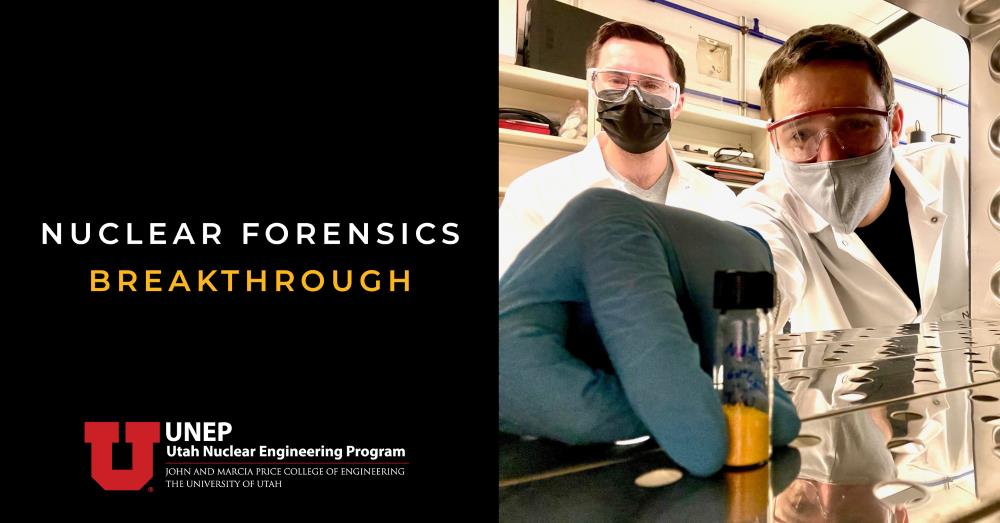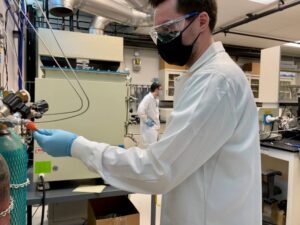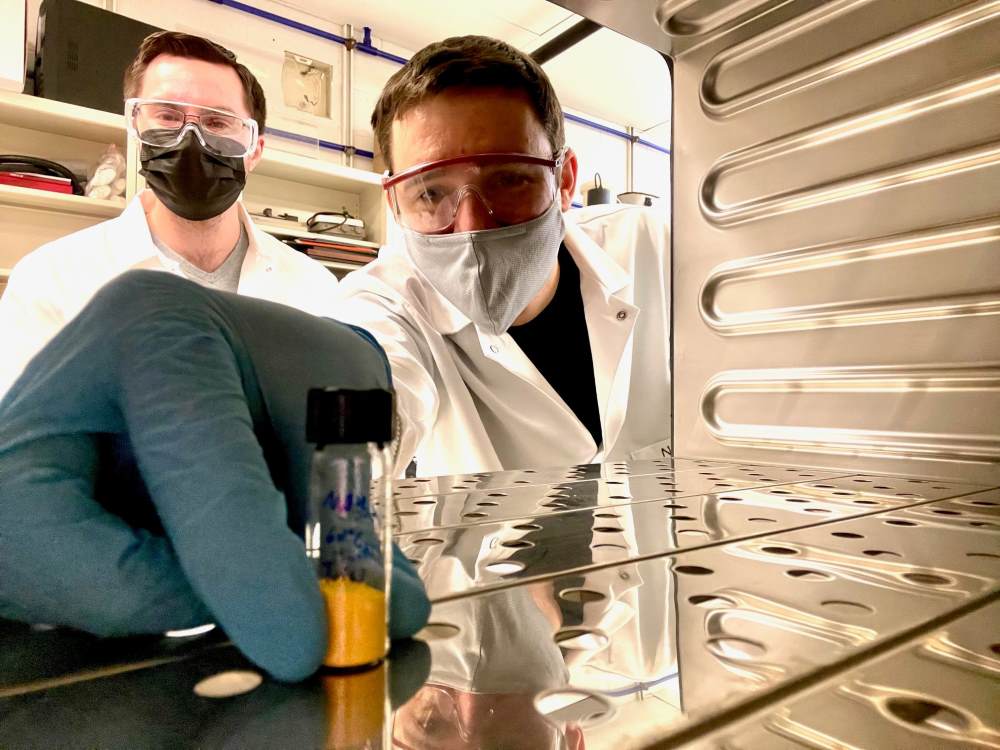+$1.3 Million in Nuclear Forensics Research Awarded to Dr. McDonald by U.S. Department of Homeland Security
Dr. Luther McDonald‘s research has received the 2023 Countering Weapons of Mass Destruction: Nuclear Forensics Research Award (NFRA), with a budget of $1,395,000 to support 36-months of laboratory experiments and student development.
For decades, the nuclear forensic community has wanted to use oxygen stable isotope ratios (18O/16O) to determine the origin of materials, but the process was unclear. Since 2017, Luther’s research team has collaborated with experts in stable isotope geochemistry at Lawrence Livermore National Laboratory (LLNL) through the Seaborg Graduate Student Fellowship Programs. Nuclear engineering students at the U would make samples in Luther’s laboratory, then use the unique facilities at LLNL to characterize the oxygen isotope ratio. Recently, the team discovered that certain uranium processing conditions yield distinct oxygen isotope ratios on the final product. With funding from the U.S. Department of Homeland Security, the U team will use this recent discovery to create standardized U-oxide samples in controlled environments. They will then work with LLNL to use three techniques: bulk fluorination, laser fluorination, and thermogravimetric analysis with isotope ratio infrared spectroscopy (TGA-IRIS) to analyze the oxygen composition of the samples.
This collaboration combines the University of Utah’s radiochemistry and nuclear material synthesis expertise with LLNL’s stable isotope geochemistry skills. Completing this research will help link production history with the production location in a nuclear forensics’ investigation.
A significant aspect of this work is student development and training. The complex experiments will require students to develop advanced laboratory skills and the students will have ample opportunities for success through internships at LLNL and access to unique facilities at the U, including the Utah Nanofab. Success from the student’s research will result in numerous peer-reviewed publications and conference proceedings.
The overall success of this research will have a significant impact on advancing the nuclear forensics community and developing a pipeline of future nuclear forensics experts.
Above: Former PhD student Aaron Chalifoux is operating the gas manifolds to control the atmosphere in the nearby furnaces. The furnaces can be operated fully inert with pure nitrogen or helium, in air, or in a reducing atmosphere such as 5% hydrogen in nitrogen gas. For different atmospheres and furnace temperatures, we can control the synthesis of uranium oxides. This early research with Aaron was supported with two Seaborg Graduate Fellowships at LLNL in 2020 and 2021. Data from those efforts laid the groundwork for the recently funded NFRA.
Above: A sample of uranium oxide is being removed from an environmental storage container. The light color indicates it’s likely a uranium ore concentrate (UOC) or a lightly calcined uranium oxide such as UO3. These uranium oxides are made under controlled atmospheres by PhD students working with Dr. McDonald. For the NFRA, small aliquots of these samples will be shipped to LLNL for detailed analysis of the oxygen isotope ratios.



